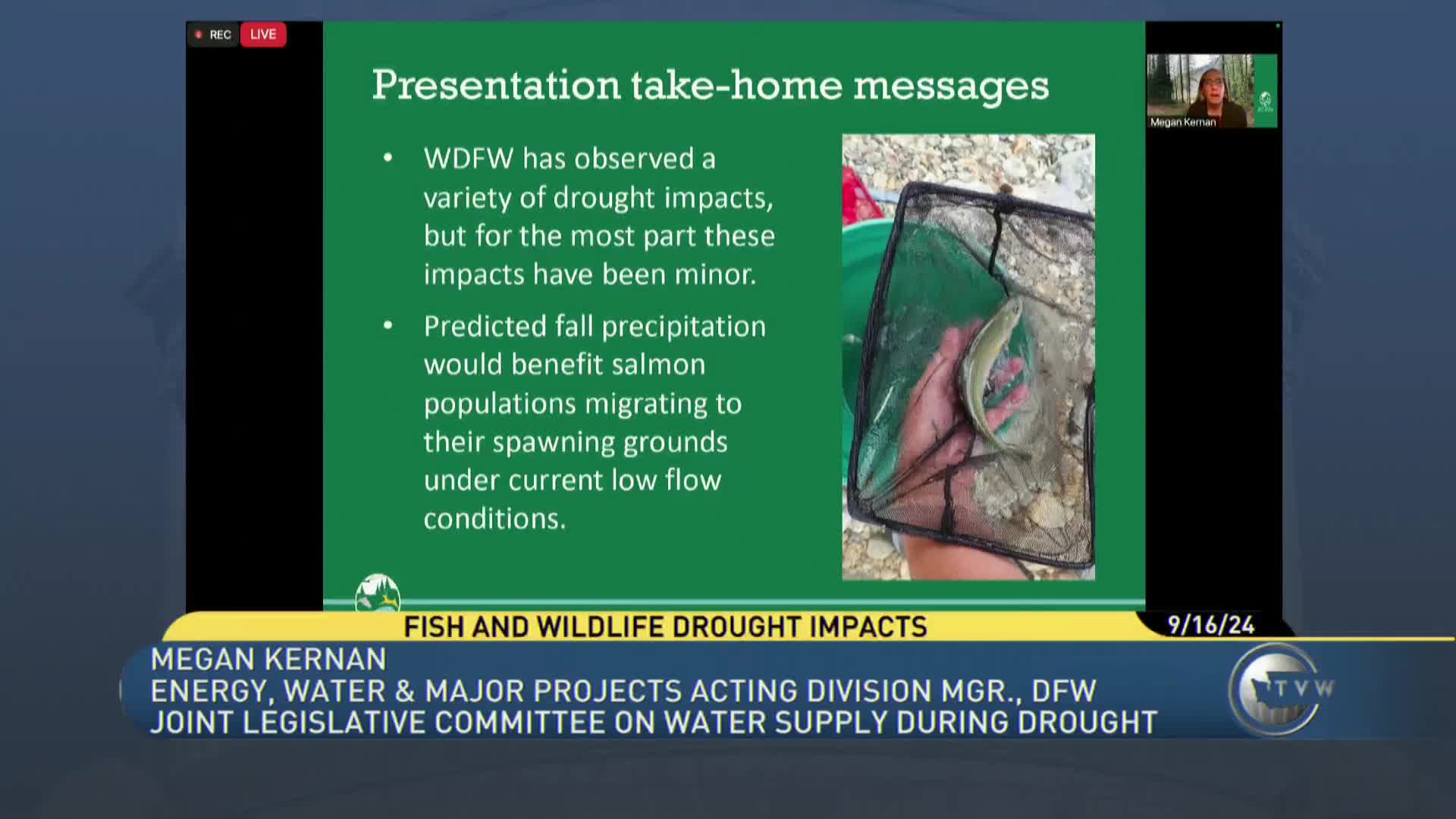Salmon populations thrive despite challenging water conditions
September 16, 2024 | Joint Legislative Committee on Water Supply During Drought, Joint, Work Groups & Task Forces, Legislative Sessions, Washington
This article was created by AI summarizing key points discussed. AI makes mistakes, so for full details and context, please refer to the video of the full meeting. Please report any errors so we can fix them. Report an error »

During a recent government meeting, officials discussed the ongoing challenges facing salmon populations in Washington state, particularly in light of low stream flows and elevated water temperatures. The meeting highlighted the importance of upcoming fall precipitation, which is expected to benefit migrating salmon.
The South Fork of the Nooksack River was a focal point, as it experienced a significant Chinook salmon pre-spawn mortality event in 2021 due to high temperatures and low flows. This year, while conditions remained warm, officials noted that a timely rain event in late August significantly increased river flow, allowing salmon to access cooler waters and potentially reducing disease spread.
The Deschutes River was also addressed, with officials noting that its flow levels have remained low, tracking closely with last year's figures. In contrast, the Walla Walla River showed more favorable conditions, with flows above average in August, attributed to better snowpack levels in the Blue Mountains.
Concerns were raised regarding the Okanagan River, which has historically faced challenges during drought years. This year, despite lower stream flows, there were no significant mortality events reported among sockeye salmon. Officials attributed this to cooler conditions in the Columbia River, which provided a refuge for fish during high-temperature periods.
The meeting concluded with a discussion on fish passage in the upper Yakima, where drone monitoring is being utilized to assess conditions. Overall, the discussions underscored the ongoing efforts to monitor and mitigate the impacts of climate conditions on salmon populations across the state.
The South Fork of the Nooksack River was a focal point, as it experienced a significant Chinook salmon pre-spawn mortality event in 2021 due to high temperatures and low flows. This year, while conditions remained warm, officials noted that a timely rain event in late August significantly increased river flow, allowing salmon to access cooler waters and potentially reducing disease spread.
The Deschutes River was also addressed, with officials noting that its flow levels have remained low, tracking closely with last year's figures. In contrast, the Walla Walla River showed more favorable conditions, with flows above average in August, attributed to better snowpack levels in the Blue Mountains.
Concerns were raised regarding the Okanagan River, which has historically faced challenges during drought years. This year, despite lower stream flows, there were no significant mortality events reported among sockeye salmon. Officials attributed this to cooler conditions in the Columbia River, which provided a refuge for fish during high-temperature periods.
The meeting concluded with a discussion on fish passage in the upper Yakima, where drone monitoring is being utilized to assess conditions. Overall, the discussions underscored the ongoing efforts to monitor and mitigate the impacts of climate conditions on salmon populations across the state.
View full meeting
This article is based on a recent meeting—watch the full video and explore the complete transcript for deeper insights into the discussion.
View full meeting
